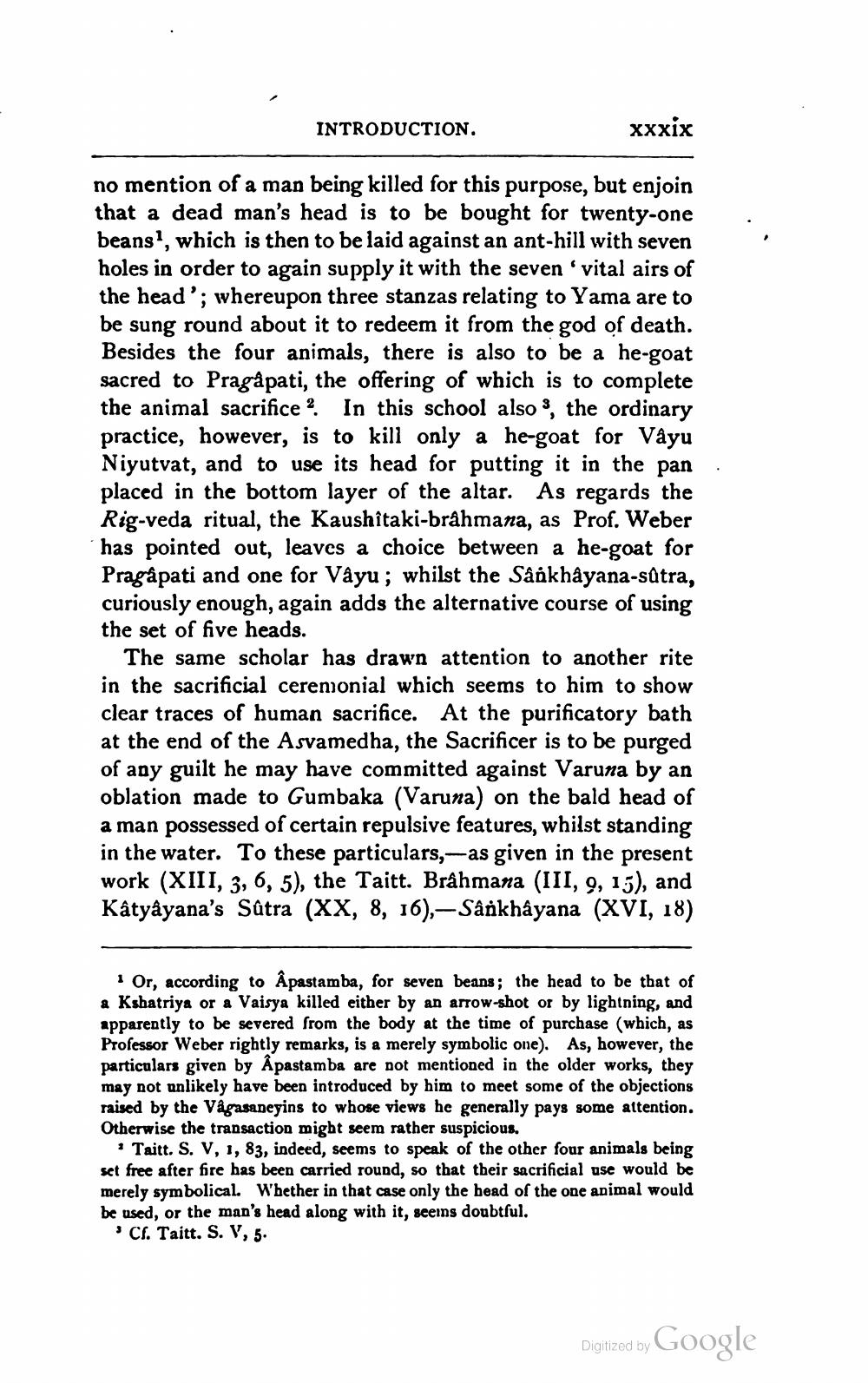________________
INTRODUCTION.
xxxix
no mention of a man being killed for this purpose, but enjoin that a dead man's head is to be bought for twenty-one beans', which is then to be laid against an ant-hill with seven holes in order to again supply it with the seven 'vital airs of the head'; whereupon three stanzas relating to Yama are to be sung round about it to redeem it from the god of death. Besides the four animals, there is also to be a he-goat sacred to Pragå pati, the offering of which is to complete the animal sacrifice? In this school also, the ordinary practice, however, is to kill only a he-goat for Vayu Niyutvat, and to use its head for putting it in the pan placed in the bottom layer of the altar. As regards the Rig-veda ritual, the Kaushitaki-brahmana, as Prof. Weber has pointed out, leaves a choice between a he-goat for Pragapati and one for Vayu; whilst the Sâökhayana-sútra, curiously enough, again adds the alternative course of using the set of five heads.
The same scholar has drawn attention to another rite in the sacrificial cerenionial which seems to him to show clear traces of human sacrifice. At the purificatory bath at the end of the Asvamedha, the Sacrificer is to be purged of any guilt he may have committed against Varuna by an oblation made to Gumbaka (Varuna) on the bald head of a man possessed of certain repulsive features, whilst standing in the water. To these particulars,-as given in the present work (XIII, 3, 6, 5), the Taitt. Brahmana (III, 9, 15), and Kâtyâyana's Sûtra (XX, 8, 16), -Sânkhâyana (XVI, 18)
1 Or, according to Âpastamba, for seven beans; the head to be that of a Kshatriya or a Vaisya killed either by an arrow-shot or by lightning, and apparently to be severed from the body at the time of purchase (which, as Professor Weber rightly remarks, is a merely symbolic one). As, however, the particulars given by Åpastamba are not mentioned in the older works, they may not unlikely have been introduced by him to meet some of the objections raised by the Vågasaneyins to whose views he generally pays some attention. Otherwise the transaction might seem rather suspicious.
• Taitt. S. V, 1, 83, indeed, seems to speak of the other four animals being set free after fire has been carried round, so that their sacrificial use would be merely symbolical. Whether in that case only the bead of the one animal would be used, or the man's head along with it, seeins doubtful.
"Cl. Taitt. S. V, 5.
Digitized by Google




